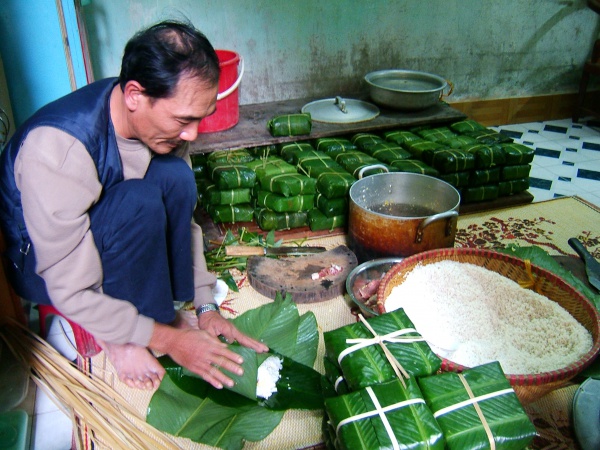Facts About Bánh chưng
"Bánh chưng" is a revered Vietnamese rice cake that occupies a significant position in the nation's culinary and cultural traditions. Crafted from glutinous rice, mung beans, pork, and various other ingredients, this cake boasts a rich history rooted in the legend of Lang Liêu, a prince from the Sixth Hùng Dynasty. According to the tale, Lang Liêu created bánh chưng to symbolize the earth and the sky, embedding it firmly in Tết holiday celebrations and making it a staple on family altars.
The primary ingredients for bánh chưng include glutinous rice, mung beans, fatty pork, black pepper, salt, and occasionally green onions and fish sauce (nước mắm). The cake is meticulously wrapped in leaves and bound with strings before being boiled for several hours. Once cooked and unwrapped, the rice layer adopts a beautiful green hue. Traditionally, bánh chưng is enjoyed with pickled onions, vegetables, Vietnamese sausage (chả lụa), and fish sauce.
The preparation of bánh chưng is traditionally a family affair, especially in the days leading up to Tết. Family members each have a role in the process, from cleaning the rice to wrapping the cakes. However, in contemporary times, the tradition of homemade bánh chưng has seen a decline, with many families opting to purchase the cakes instead. Despite this trend, craft villages known for their bánh chưng expertise continue to flourish, and annual competitions honor this culinary art.
Bánh chưng also comes in various forms, including fried versions and vegetarian or sweet versions for those who do not eat pork. These variations might feature fillings like molasses or brown sugar and are sometimes crafted for extended storage.
Despite evolving times, bánh chưng remains a cherished dish bearing profound cultural significance in Vietnam. Whether enjoyed during Tết or as a year-round treat, it endures as a symbol of Vietnamese heritage and culinary excellence.

 Cambodia
Cambodia